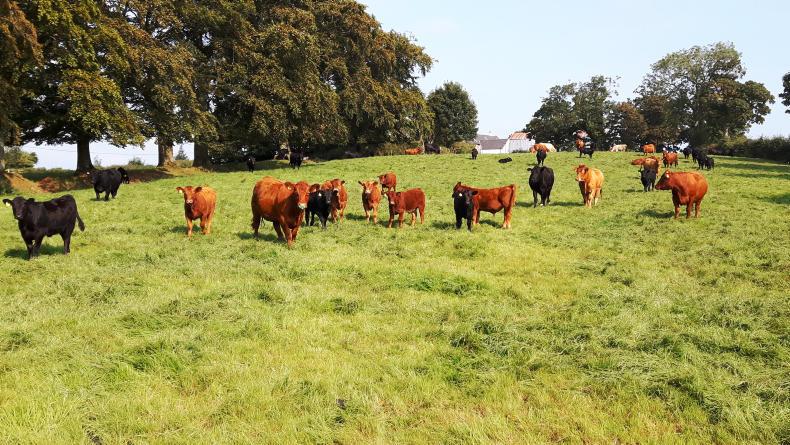All of my cows are spring-calving from March through to May. Last week, I gave this year’s calves their second pneumonia vaccine in preparation for housing, which I hope will not be for a while yet. Calves will be weaned this year in December.
I have a later calving period and a lower stocking rate than most of the programme farms, and together with adequate housing facilities, it allows cows and calves to be housed together.
Although calves have access to a creep area and houses are well ventilated, it does not necessarily mean that pneumonia will not be a risk. In the past, when vaccination was not carried out, there were always a few calves that needed treatment for respiratory problems after housing. It was not always those calves which were identified as needing treatment that caused the most problems. There were occasions when a calf would show no signs of a respiratory problem, yet daily liveweight gain was poor right through to slaughter. Vaccination is initially expensive and it is not foolproof, but I have found that it is a worthwhile investment compared with the alternative extra costs of treating sick calves and the impact it has on performance.
Worming
I also gave all calves a second worm dose by using Doromectin pour-on. This should provide sufficient worm cover through to housing. After housing, I will take some faecal egg samples to determine if a further dose is required. The first-calved heifers have also received their worm dose for this year.
Finishing cattle
The 2015 spring-born steers and heifers are now being finished. Steers have performed very well to date and are being fed ad-lib silage (DM 28.3%, protein 12.7%, ME 11.6 and 73 D-value), along with 3kg of mineralised rolled barley. With steers predominantly Aberdeen Angus bred, I don’t want them to become over-fat too quickly. Good performance when on the cows last year has followed through with this batch of steers averaging 575kg at present.
The first steers born from my Angus stock bull, Netherton Archie, were slaughtered in late August. They killed out at 373.9kg at 16.1 months of age. Most of the comrades are not too far behind this. IBR has been an issue in this herd so after being vaccinated pre-weaning, all beef cattle are vaccinated at six-month intervals through to slaughter.
Stock bulls housed
I have been trying to build cow numbers to increase output in recent years. Therefore, to ensure I had enough cows in-calf to grow the herd, I would have been holding the stock bulls with the cows until the end of September to get as many cows as possible covered. In reality, this only served to extend the calving period with later calving cows causing more problems than solutions. Cows calved this spring had an average caving index of 373 days. I hope to at least maintain or improve on this over the coming years. In the last two years, the four stock bulls were taken away from the cows at the end of August. This year, the bulls ran with 90 cows and 22 replacement heifers over an 11-week period. After removing them, they were housed in two groups with a young bull and older bull mixed together. Over the years, I’ve found that mixing bulls of similar age and size together can be a problem. But mixing two bulls with an obvious age difference has generally been less of a problem. This means the stock bulls will require two rather than four pens for the duration of the winter.
Scanning and culling
With cow numbers getting up to near optimum levels, I am starting to be more ruthless in culling cows which gave problems at calving or are generally poor performers. Any cow that lost a calf this spring has already been culled. After scanning in October, empty cows will be weaned and, if required, they will be fed for a short time before slaughter. The use of more maternal Stabiliser and Aberdeen Angus genetics has given a greater selection of breeding heifers, which makes it easier to cull harder on the cow herd.
Grazing
The weather this summer has meant it has been a terrific year for grass growth on this farm. Fortunately, I have been able to utilise this grass unlike some of the other programme farms in the west. Calves have been performing well and were weighed when vaccinated. Bulls and heifers averaged 1.32kg/day and 1.21kg/ day from birth, respectively.
Ten acres reseeded in late June has been grazed off twice. The post-emergence spray has worked well to eradicate weeds and left a clean sward. Some covers have now become too strong for grazing and some second-cut aftermaths originally earmarked for grazing have been ensiled this week.






 This is a subscriber-only article
This is a subscriber-only article










SHARING OPTIONS: